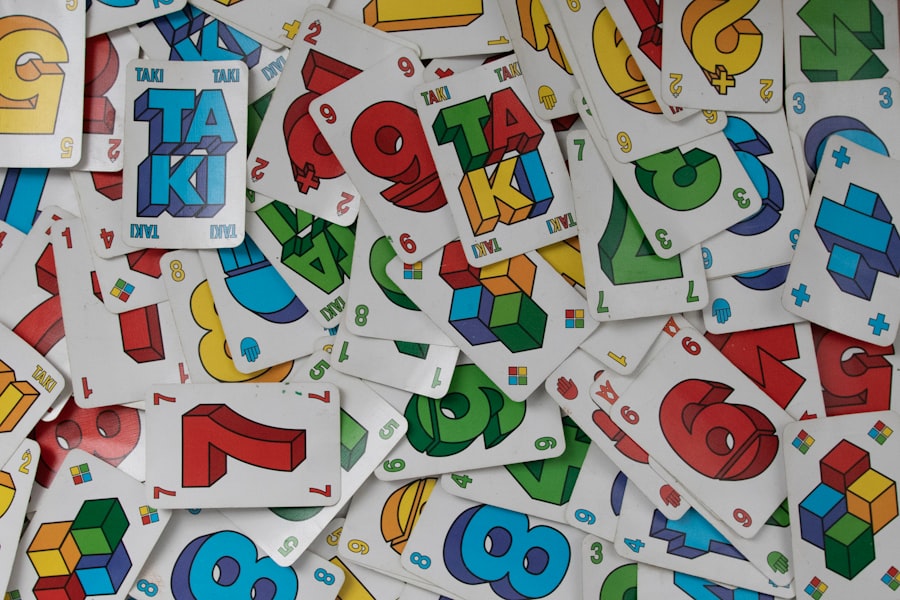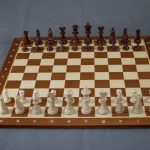Win Big with Bingo: The Ultimate Guide to Mastering the Game
Description
Bingo has a rich and fascinating history that traces its origins back to 16th-century Italy. The game, known as “Il Gioco del Lotto d’Italia,” was initially a lottery game that involved players selecting numbers from a pool. This early version of bingo was played primarily by the upper classes, who enjoyed the thrill of chance and the potential for monetary gain.
As the game gained popularity, it spread to France and then to Germany, where it evolved into a children’s game called “Beano.” In this version, players would use beans to cover their numbers on a card, and the excitement of winning was palpable. The transformation of Beano into the modern game of Bingo occurred in the United States during the 1920s. A traveling carnival worker named Edwin S.
Lowe stumbled upon the game while visiting a fair in Georgia. Captivated by its simplicity and excitement, he decided to create his own version, complete with specially printed cards and a unique set of rules. Lowe’s innovation included the use of a wooden ball machine to randomly draw numbers, which added an element of unpredictability that players found irresistible.
By the end of the decade, Bingo had become a staple in American culture, with churches and community centers hosting regular games to raise funds.
Key Takeaways
- Bingo originated in Italy and has evolved into a popular game worldwide.
- The rules of bingo are simple: players mark off numbers on their cards as they are called out, aiming to complete a specific pattern for a win.
- To maximize bingo success, consider playing with multiple cards and choosing games with fewer players.
- Bingo comes in various forms, including 75-ball and 90-ball, each with its own unique rules and strategies.
- Enjoy the social aspect of bingo by playing with friends and family, and engaging in the lively atmosphere of the game.
The Rules of Bingo: How to Play and Win
The Gameplay
Each player receives a card featuring a grid of numbers arranged in a specific pattern, typically five rows and five columns. The center square is often marked as a “free” space, allowing players to cover it without needing to draw a number.
The Objective
The objective is simple: players must mark off numbers on their cards as they are called out by the host until they achieve a predetermined pattern, such as a straight line, diagonal, or full house. The calling of numbers is done using a random number generator or a physical drawing mechanism, such as a spinning cage filled with numbered balls. As each number is announced, players check their cards and mark off any matches.
Winning the Game
The first player to complete the required pattern shouts “Bingo!” to claim victory. However, it’s essential for players to ensure that their card is indeed valid before calling out, as mistakes can lead to disputes and confusion. In many games, multiple winners can occur if several players achieve Bingo simultaneously.
Tips and Strategies for Maximizing Your Bingo Success

While Bingo is primarily a game of chance, there are strategies that players can employ to enhance their odds of winning. One effective approach is to play multiple cards simultaneously. By increasing the number of cards in play, players can cover more numbers and improve their chances of completing a winning pattern.
However, this strategy requires keen attention and quick reflexes, as players must be able to track multiple cards at once without becoming overwhelmed. Another useful tip is to choose games with fewer participants. In larger games, the competition increases significantly, making it more challenging to win.
Opting for smaller venues or less popular time slots can lead to better odds. Additionally, players should familiarize themselves with the specific rules and patterns required for each game variant they participate in. Understanding these nuances can provide an edge over less experienced players who may not be as well-versed in the game’s intricacies.
The Different Variations of Bingo: 75-Ball, 90-Ball, and More
| Bingo Variation | Description | Number of Balls | Card Layout |
|---|---|---|---|
| 75-Ball Bingo | Popular in the US, players mark off numbers on a 5×5 grid | 75 | 5×5 grid with a free space in the middle |
| 90-Ball Bingo | Common in the UK and Europe, players mark off numbers on a 9×3 grid | 90 | 3 rows of 9 numbers |
| 30-Ball Bingo | Also known as speed bingo, players mark off numbers on a 3×3 grid | 30 | 3×3 grid |
Bingo has evolved into various formats that cater to different preferences and regional traditions. The two most popular variations are 75-ball and 90-ball Bingo. In 75-ball Bingo, which is predominantly played in North America, players receive cards with a 5×5 grid containing 25 squares filled with numbers ranging from 1 to 75.
The objective is to complete specific patterns such as lines or shapes, which adds an element of strategy as players can aim for different winning configurations. Conversely, 90-ball Bingo is more commonly found in the United Kingdom and Australia. In this version, players use cards with three rows and nine columns, containing a total of 15 numbers selected from 1 to 90.
The game typically has three prizes: one for completing one line, another for two lines, and a final prize for filling the entire card. This format introduces an additional layer of excitement as players can win multiple times during a single game.
Each variation offers its own set of challenges and rewards, ensuring that players can find a format that suits their preferences.
The Social Aspect of Bingo: How to Enjoy the Game with Friends and Family
Bingo is not just about winning; it’s also about social interaction and community engagement. Many people enjoy playing Bingo as a way to connect with friends and family in a relaxed environment. Whether at a local hall or online platform, the atmosphere is often filled with laughter and camaraderie as players share in the excitement of the game.
This social aspect is particularly evident during charity events or fundraisers where participants come together not only to play but also to support a common cause. Hosting a Bingo night at home can be an enjoyable way to bring friends and family together. By creating a festive atmosphere with snacks, drinks, and themed decorations, hosts can enhance the experience for their guests.
Incorporating prizes for winners adds an extra layer of motivation and fun. Additionally, playing Bingo in groups allows for friendly banter and competition, making it an ideal activity for gatherings or celebrations.
Bingo Lingo: Understanding the Jargon of the Game

Victory Calls
Terms like “Bingo” itself signifies victory when a player completes their card pattern.
Whimsical Phrases
Other phrases include “two fat ladies” (88), “legs eleven” (11), and “top of the shop” (90), which add an element of whimsy to the game. Understanding these terms not only enriches gameplay but also fosters connections among players who share in the humor and tradition behind them.
Creating an Engaging Atmosphere
Many Bingo halls encourage callers to use these phrases during games, creating an engaging atmosphere that keeps participants entertained while they play.
The Rise of Online Bingo: How to Play and Win from the Comfort of Your Home
The advent of technology has revolutionized how people engage with Bingo, leading to the rise of online platforms that allow players to enjoy the game from home. Online Bingo offers convenience and accessibility, enabling individuals to participate in games at any time without needing to travel to a physical location. Players can choose from various game types and styles while enjoying interactive features such as chat rooms where they can communicate with fellow players.
Online platforms often provide bonuses and promotions that enhance the gaming experience. New players may receive welcome bonuses or free tickets for their first games, while regular participants can benefit from loyalty programs that reward consistent play. Additionally, many online Bingo sites offer themed games that cater to diverse interests, ensuring that there’s something for everyone.
However, while online Bingo presents numerous advantages, it’s essential for players to approach it responsibly.
Bingo Etiquette: How to Be a Courteous and Respectful Player
As with any social activity, adhering to proper etiquette is crucial when playing Bingo—whether in person or online. Respecting fellow players is paramount; this includes being attentive when numbers are called and refraining from distractions that could disrupt others’ concentration. In physical settings, it’s important to keep noise levels down during gameplay so that everyone can hear the caller clearly.
In online environments, maintaining respectful communication in chat rooms is equally important. Players should avoid using offensive language or engaging in negative behavior towards others. Additionally, if someone calls out “Bingo,” it’s courteous for other players to remain quiet while the host verifies the win before celebrating or continuing play.
By fostering an atmosphere of respect and camaraderie, players can ensure that Bingo remains an enjoyable experience for everyone involved—whether they are seasoned veterans or newcomers discovering the game for the first time.
If you’re a fan of bingo, you may also be interested in checking out the article on maximizing your game with Taya777 online sports. This article offers tips and strategies for getting the most out of your online gaming experience. You can read more about it here.
FAQs
What is bingo?
Bingo is a game of chance in which players mark off numbers on cards as the numbers are drawn randomly by a caller. The first player to mark off a predetermined pattern of numbers calls out “Bingo!” and wins the game.
How is bingo played?
Bingo is typically played with a set of numbered balls or a random number generator. Players have cards with a grid of numbers on them, and they mark off the numbers as they are called. The first player to complete a specific pattern on their card wins.
What are the common patterns in bingo?
Common patterns in bingo include straight lines (horizontal, vertical, or diagonal), four corners, and blackout (covering all the numbers on the card).
Where is bingo commonly played?
Bingo is commonly played in dedicated bingo halls, community centers, and online. It is also a popular game at fundraisers, social events, and retirement communities.
Is bingo a game of skill or luck?
Bingo is primarily a game of luck, as the numbers are drawn randomly and players have no control over which numbers are called. However, players can increase their chances of winning by playing multiple cards or using strategic techniques.
What are the prizes in bingo?
Prizes in bingo can vary depending on the game and the number of players. Common prizes include cash, gift cards, and merchandise. In some cases, a portion of the proceeds may go to a charitable cause.





